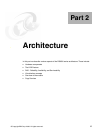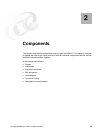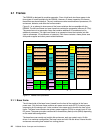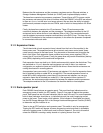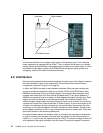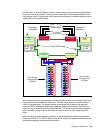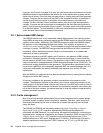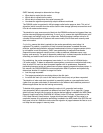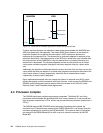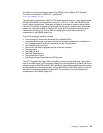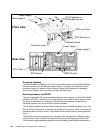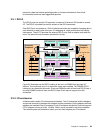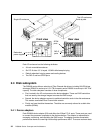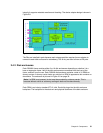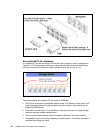Chapter 2. Components 25
SARC basically attempts to determine four things:
When data is copied into the cache.
Which data is copied into the cache.
Which data is evicted when the cache becomes full.
How does the algorithm dynamically adapt to different workloads.
The DS8000 cache is organized in 4K byte pages called cache pages or slots. This unit of
allocation (which is smaller than the values used in other storage systems) ensures that small
I/Os do not waste cache memory.
The decision to copy some amount of data into the DS8000 cache can be triggered from two
policies: demand paging and prefetching.
Demand paging means that eight disk blocks (a 4K
cache page) are brought in only on a cache miss. Demand paging is always active for all
volumes and ensures that I/O patterns with some locality find at least some recently used
data in the cache.
Prefetching means that data is copied into the cache speculatively even before it is
requested. To prefetch, a prediction of likely future data accesses is needed. Because
effective, sophisticated prediction schemes need extensive history of page accesses (which
is not feasible in real-life systems), SARC uses prefetching for sequential workloads.
Sequential access patterns naturally arise in video-on-demand, database scans, copy,
backup, and recovery. The goal of sequential prefetching is to detect sequential access and
effectively pre-load the cache with data so as to minimize cache misses.
For prefetching, the cache management uses tracks. A
track is a set of 128 disk blocks
(16 cache pages). To detect a sequential access pattern, counters are maintained with every
track to record if a track has been accessed together with its predecessor. Sequential
prefetching becomes active only when these counters suggest a sequential access pattern. In
this manner, the DS6000/DS8000 monitors application read-I/O patterns and dynamically
determines whether it is optimal to stage into cache:
Just the page requested
That page requested plus remaining data on the disk track
An entire disk track (or a set of disk tracks) which has (have) not yet been requested
The decision of when and what to prefetch is essentially made on a per-application basis
(rather than a system-wide basis) to be sensitive to the different data reference patterns of
different applications that can be running concurrently.
To decide which pages are evicted when the cache is full, sequential and random
(non-sequential) data is separated into different lists (see Figure 2-4 on page 26). A page
which has been brought into the cache by simple demand paging is added to the MRU (Most
Recently Used) head of the RANDOM list. Without further I/O access, it goes down to the
LRU (Least Recently Used) bottom. A page which has been brought into the cache by a
sequential access or by sequential prefetching is added to the MRU head of the SEQ list and
then goes in that list. Additional rules control the migration of pages between the lists so as to
not keep the same pages in memory twice.



